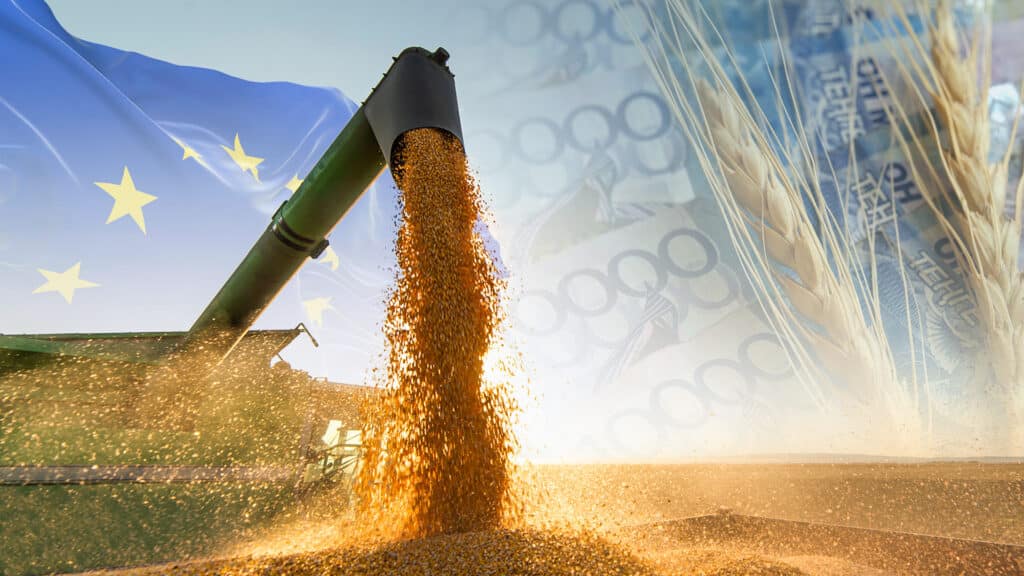Kazakhstan hopes to boost grain exports to Europe amid sanctions against Russia

Since July 1, the European Union has imposed higher tariffs on grain imports from Russia and Belarus. The Kazakh Grain Union believes this situation presents an opportunity for Kazakhstan to increase its grain exports to European markets. However, transportation subsidies are crucial to achieving this goal, according to experts at the Agricom forum.
«To boost grain exports to the EU, we must ensure our prices are competitive with those of Russian grain. Even with tariffs on Russian grain, our transportation costs make it difficult to compete,» said Nurlan Ospanov, head of the Kazakh Grain Union.
Yevgeny Karabanov, another union official, noted that the tariff on soft wheat and durum from Russia is €95 and €148, respectively; 20% for flax seeds (10% before the new year) and 50% on sunflower seeds and other crops.
«We certainly see this opportunity but it is not an easy task to calculate all the logistic costs. Moreover, if Russians decide to sell their products in other markets, including China, we’ll face stiffer competition there. We’ve gained no significant upper hand here. I don’t think so. The EU has complicated things for itself as they are going to pay more for the same products… I mean, if Russian prices with a tariff will be comparable with prices for goods from Canada or Kazakhstan, they won’t gain anything,» said Karabanov.
The expert also explained that transporting Kazakhstani flax to Belgium costs exporters about $140-$145 per ton, while the final price for flax itself in Europe is $620 per ton. This means that transportation accounts for 23% of the final cost of flax.
According to Ospanov, Kazakhstan needs to subsidize transportation costs for exporters to successfully enter new markets. This will help reduce the country’s carryover grain stocks.
«We believe we cannot leave large carryover stocks on the market. According to our estimates, next year’s wheat stocks will reach 4.5 million tons. However, to maintain market stability, we need to keep carryover stocks to a maximum of 2.5 million tons, with 1 to 1.5 million of that serving as the Food Corporation’s reserve,» Ospanov said.
Ospanov clarified that carryover stocks refer to grain that farmers could not sell despite the costs they incurred.
«The farmers’ money is tied up. Therefore, we can’t leave large carryover stocks aside from the Food Corporation’s reserve. Given this, we believe that in addition to our projected nine million tons of wheat sales, we need to sell another two million tons to new markets. But we won’t be able to do so without transportation subsidies, as we’re not competitive in these new markets due to logistics,» Ospanov explained.
He also mentioned that there were concerns about whether Kazakhstan would violate the World Trade Organization (WTO) agreement by introducing such subsidies. The country has committed not to create competitive advantages through tariff regulation.
«We reviewed the WTO agreement and there’s a clause that allows for the protection of national interests. Our Ministry of Trade needs to gather justifications from the Ministry of Agriculture and industry associations to demonstrate that, given the current harvest and market conditions, the government has the right to introduce subsidies for a limited time and volume to protect food security and support grain producers. Furthermore, the European market needs it as well, as they are experiencing shortages. Overall, government agencies are aware of the situation,» Ospanov concluded.
According to the grain union’s forecast, Kazakhstan’s total grain harvest will amount to 27.7 million tons, the highest output in the past six years. The soft wheat harvest is expected to be 16.8 million tons. Grain exports, including flour in grain equivalent, are forecast at 8.9 million tons, with 6.1 million tons of grain exports.

